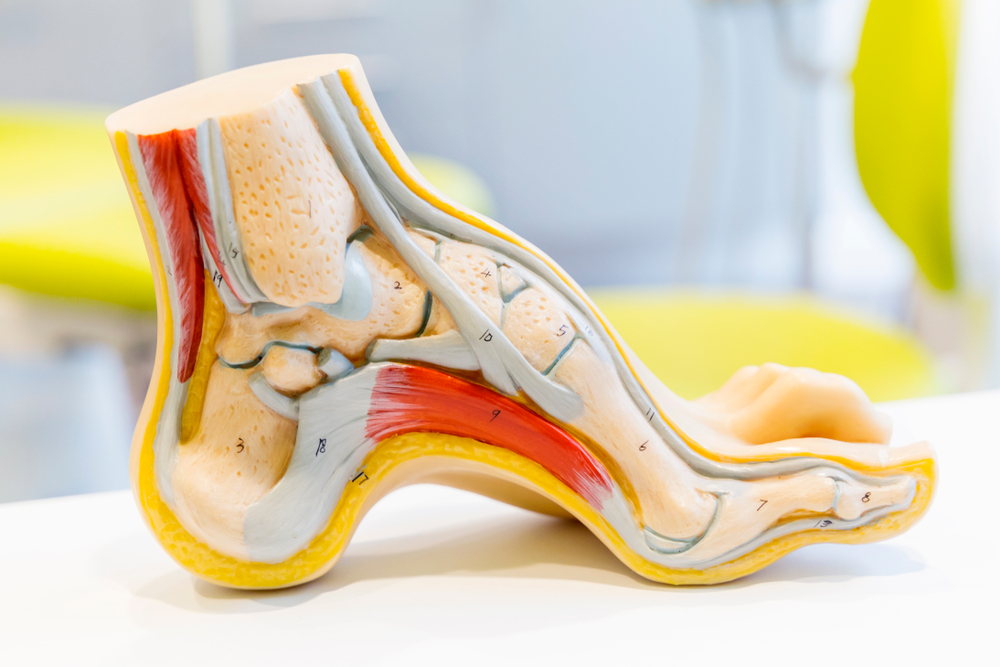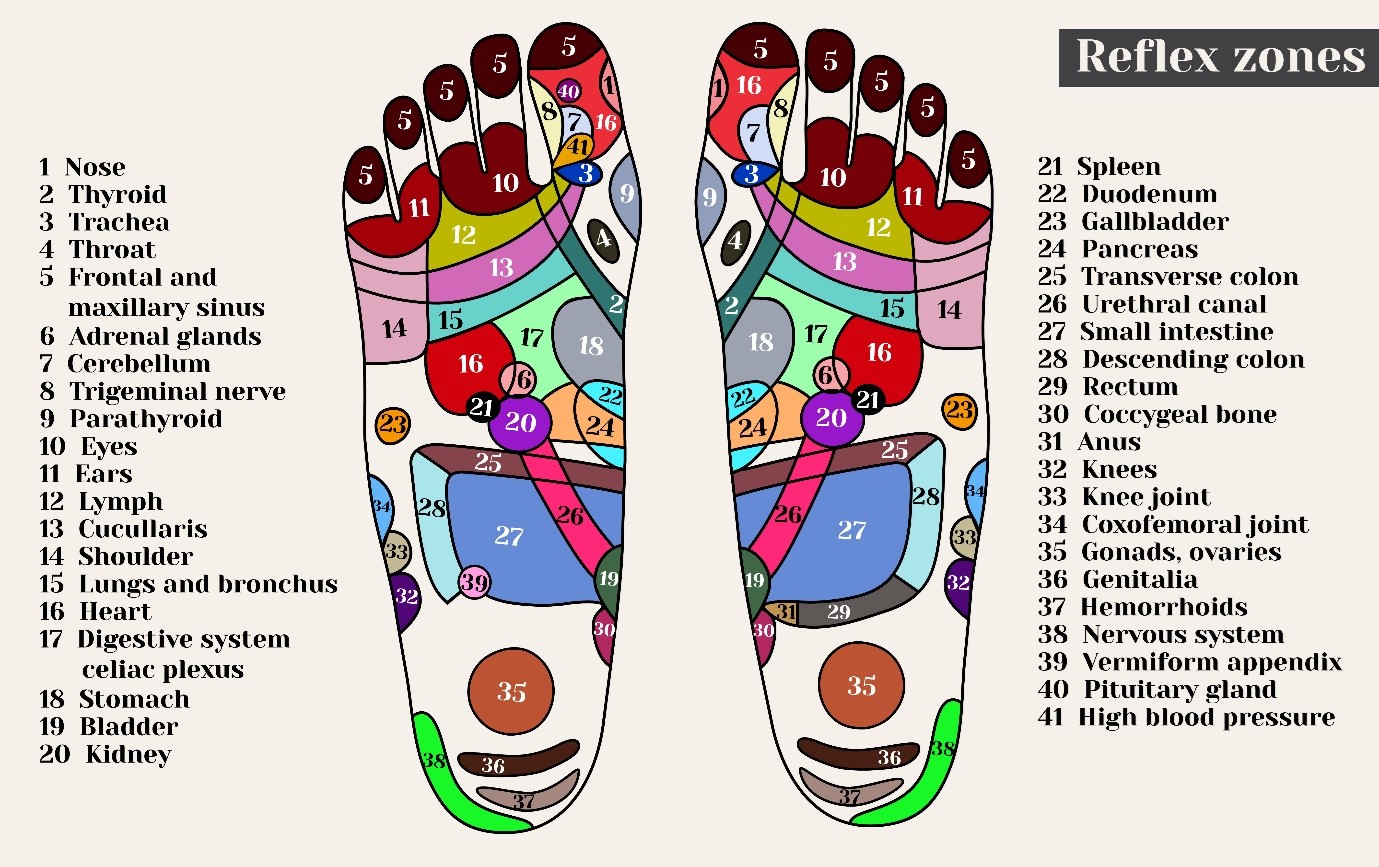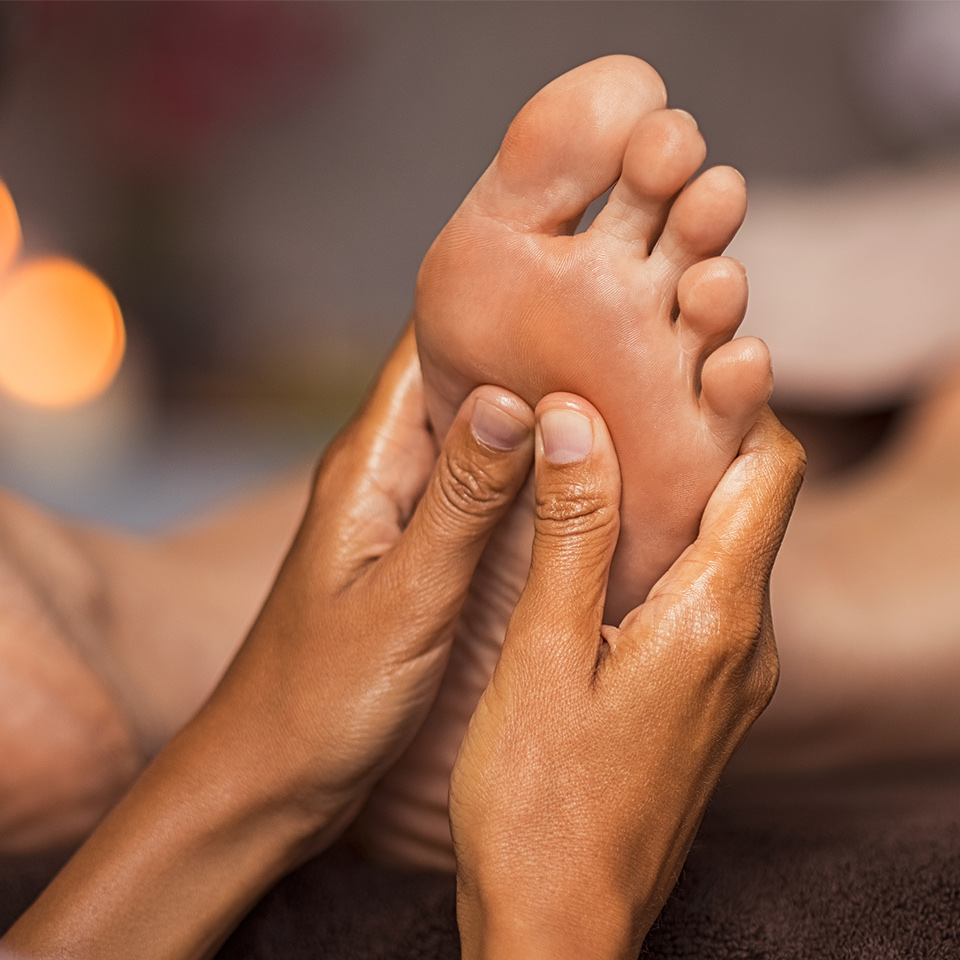Foot pressure points are specific areas of the foot that are believed to correspond with different organs, glands, and body systems. Stimulating these points through massage, acupressure, reflexology, or other techniques is thought to help to promote relaxation, reduce pain, improve circulation, and boost overall health.

Anatomy of the Foot
Before we dive into the various pressure points on the foot, let’s first go back to the basic anatomy of the foot, as understanding this is important when it comes to locating and stimulating foot pressure points.
The Toes
The toes are the digits at the front of the foot and are responsible for balance, stability, and propulsion. They contain several bones, joints, and muscles that work together to allow for movement and flexibility.
The Heel
The heel is the back part of the foot. It serves as a shock absorber, helping to cushion the foot during walking, running, and jumping. It is made up of a thick layer of fat and connective tissue, plus calcaneus bone to provide support and structure.
The Arch
The arch is the curved part that runs from the heel to the ball of the foot. It helps to distribute weight evenly across the foot and provides stability and balance. It’s made up of several small bones, ligaments, and tendons, all of which work together to create a spring-like structure that absorbs shock and propels the foot forward.
The Sole
The sole is the bottom surface of the foot and is in direct contact with the ground. It contains numerous pressure points that correspond to different organs and body systems. Stimulating these pressure points is believed to improve overall health and well-being.

Foot Pressure Points & Their Benefits
There are several key pressure points on the foot that are believed to correspond with different organs, glands, and body systems. Here are some of the most commonly-targeted foot pressure points and their benefits:
The Heel
- Location: At the back of the foot.
- How to Find it: To find this pressure point, simply use your thumb to apply pressure to the centre of your heel.
- Benefits: The heel is a large pressure point that is often targeted for pain relief. Applying pressure to the heel can help to alleviate pain in the lower back, hips, and knees.
The Ball of the Foot
- Location: At the base of the toes.
- How to Find it: Use your fingers to apply pressure to the area just below your toes.
- Benefits: Applying pressure to this area can help to relieve pain and tension in the body, and also promote relaxation.
The Arch
- Location: Runs from the heel to the ball of the foot.
- How to Find it: To find this pressure point, use your thumb to apply pressure to the area in the centre of the arch.
- Benefits: The arch of the foot is a complex pressure point that contains several smaller points. Applying pressure to the arch can help to improve circulation, reduce pain, and promote overall well-being.
The Toes
- Location: At the tip of the foot.
- How to Find it: Use your fingers to apply pressure to the base of each toe and/or the area between the toes.
- Benefits: The toes contain several pressure points that are believed to correspond with different parts of the body. By stimulating these points, you can promote relaxation, reduce pain, and stimulate internal organs.
Techniques for Stimulating Foot Pressure Points
Now we’ve located the various pressure points on the foot and understand their individual benefits, let’s discuss the best techniques for stimulating them.
- Massage: Massage is one of the most effective ways to stimulate foot pressure points. Using your fingers, thumbs, or a massage tool, apply pressure to the desired area in a circular motion. Start with light pressure and gradually increase as needed. Massage each pressure point for several minutes (or until you feel a sense of “release”).
- Acupressure: Acupressure involves applying pressure to specific points on the body, including the feet. To perform acupressure on the feet, use your fingers to apply firm pressure to the desired point, and hold for several seconds. You can then repeat as needed, focusing on any areas of tension or discomfort.
- Reflexology: Foot-specific reflexology is a practice that involves stimulating specific points on the feet to promote healing and relaxation in the corresponding parts of the body. To perform reflexology in this way, use your fingers or a reflexology tool to apply pressure to the desired point, and hold for several seconds. You can repeat this on each foot, focusing on any areas of tension or discomfort.
There are also special tools - such as rollers or balls - that are specifically designed to stimulate foot pressure points. To use these tools, simply apply pressure to the desired area and roll the tool back and forth (or use circular motions). These tools can allow you to more easily get to hard-to-reach areas, or help individuals who have difficulty using their hands.

Conditions That Can Be Treated With Foot Pressure Points
Foot pressure points can be used to treat or manage a wide range of conditions, ranging from physical pain to emotional stress. Here are some of the most common conditions that can be treated with foot pressure points:
Headaches
By stimulating the pressure points on the feet, you can help to relieve tension and pain in the head and neck. The pressure point that’s located in the webbing between the big toe and second toe is believed to be especially effective for relieving headaches.
Stimulating the pressure points on the feet can also help to alleviate menstrual cramps and other menstrual-related symptoms. The pressure point located on the inside of the ankle, just above the ankle bone, is believed to be especially effective for menstrual cramps.
Back pain
Many of the pressure points on the feet correspond with different parts of the body, including the back. By stimulating these points, a practitioner can help to relieve pain and tension in the back. The pressure point in the centre of the arch is thought to be especially effective for back pain.
Foot pressure points can also be used to manage emotional stress and anxiety. The pressure point at the base of the big toe is commonly used for reducing anxiety and promoting relaxation.
Incorporating foot pressure point therapy into your wellness routine can have a positive impact on overall health and well-being. However, do keep in mind that foot pressure points should not be used as a substitute for medical treatment, and individuals with serious or chronic conditions should always consult with a healthcare professional before depending on them.
If you’re interested in learning more about reflexology and the advanced techniques that stimulate foot pressure points, check out our Reflexology Diploma Course, and our Advanced Reflexology Diploma Course. Both courses provide in-depth knowledge and practical skills to help individuals become experts in the field of reflexology and foot pressure point therapy. Furthermore, both are currently available for just £29 each, which represents a fantastic saving of £98 on the Diploma Course, and an even bigger saving of £118 on the Advanced Diploma.




